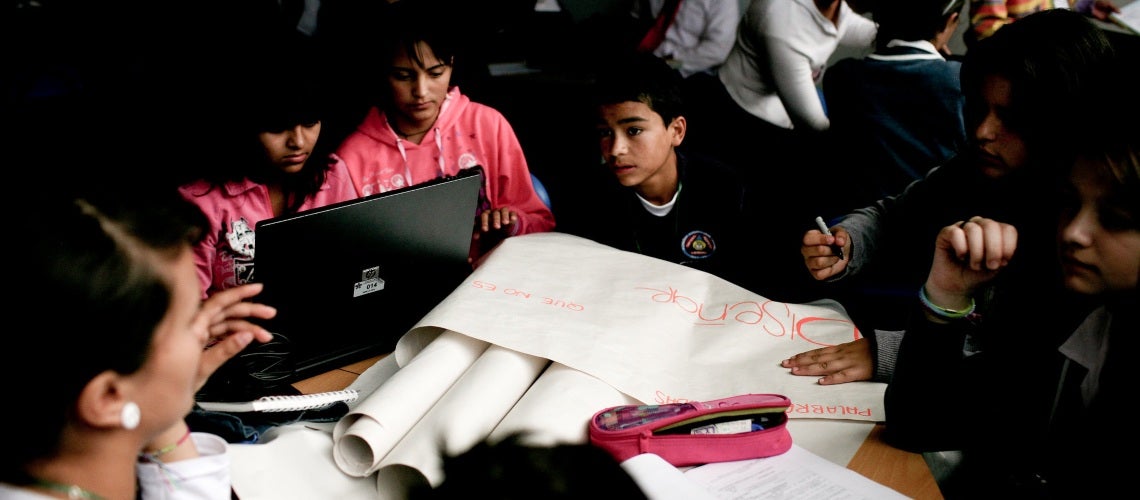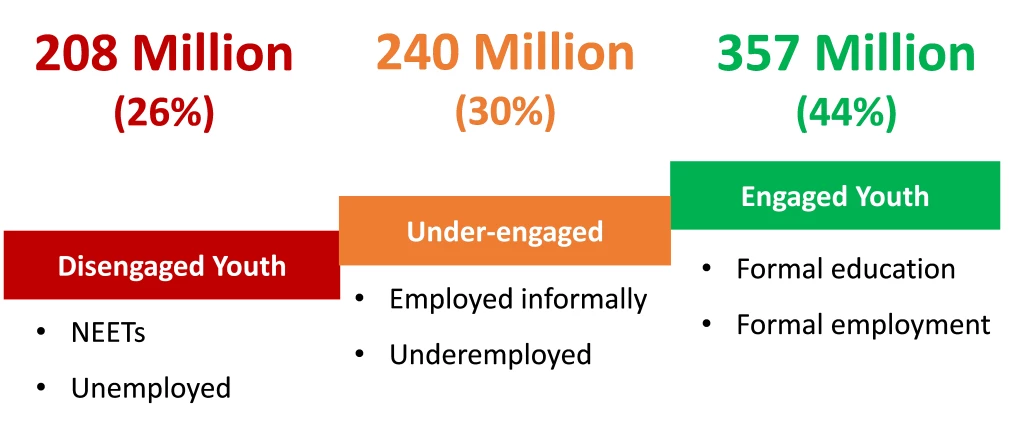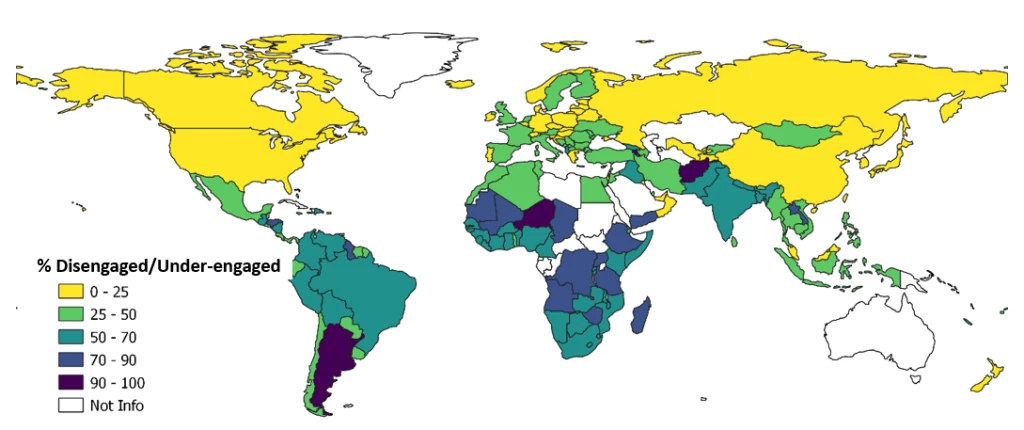 Youth workforce development programs should reinforce foundational skills, reactivate disengaged youth, and target long-term unemployed youth. Copyright: Charlotte Kesl/World Bank
Youth workforce development programs should reinforce foundational skills, reactivate disengaged youth, and target long-term unemployed youth. Copyright: Charlotte Kesl/World Bank
Unlocking the potential of youth and empowering them with the necessary skills for success is a cause worth commemorating. This is why in 2014, the UN General Assembly declared the 15 th of July as World Youth Skills Day to recognize the strategic importance of equipping young people with skills for employment, decent work, and entrepreneurship.
Since then, World Youth Skills Day has provided a unique opportunity to remember that youth are the future (and present) of the global workforce. As the world’s workforce shrinks due to demographic shifts and new global trends surge, such as digitalization, we must empower youth for productive economic engagement amidst these changes.
Youth disengagement
Yet, seven out of every 10 youth globally are economically disengaged or under-engaged.
Youth economic disengagement occurs when individuals are in a temporary or permanent state in which they do not have adequate access to opportunities for skills development. Youth that are not in education, employment, or training (also referred to as the NEET population), are the most disengaged.
Nonetheless, the NEETs are only the tip of the iceberg of a larger and deeper problem where youth are engaged in activities that are not conducive to human capital development. This significant population is often ignored by national statistics and overlooked by policymakers worldwide. According to the latest available data from the International Labor Organization (ILO), about 448 million youth are economically disengaged or engaged in low-quality employment (Figure 1).
Youth economic disengagement has several negative consequences, including reduced economic growth, political instability, social exclusion (young people disconnect from their communities), and increased crime and social unrest, to name a few.
Figure 1: Youth Engagement – Global Statistics

Disengagement in low- and middle-income countries
Youth economic disengagement is particularly acute in low- and middle-income countries, especially Latin America, South Asia, and Sub-Saharan Africa. In some countries, a majority of youths are economically disengaged or under-engaged, with rates surpassing 70 or 80 percent. This highlights an evident social and human capital crisis. Regarding the stock, data indicate that most disengaged youth (about 66 percent) live in South Asia and Latin America.
Figure 2: Youth Disengagement Statistics by country

Lack of skills drives youth economic disengagement
Youths lacking skills are unlikely to engage in productive employment or education. Data indicate a strong negative correlation between a country’s “human capital index” and youth disengagement, suggesting that skills are essential to helping youth attain their economic potential. The HCI is a proxy of how individuals’ skills and health attained during their first 18 years shape their productivity as they enter the workforce. Similarly, there is a positive correlation between countries with high rates of individuals without minimum reading proficiency skills, as measured by OECD's Programme for International Student Assessment (PISA), and their levels of youth disengagement.
Productive employment opportunities require highly complex, technical, and job-specific skills such as critical thinking, problem solving, and advanced computational skills. These specialized skills are nearly impossible to develop if individuals do not possess a minimum endowment of human capital and core foundational skills, such as basic numeracy, literacy, and socio-emotional skills.
Youth workforce development will remain a critical development priority
Youth economic disengagement is a complex challenge that requires investment, a mix of solutions, and a sustained approach. Recent estimates suggest that the global economy could gain an estimated $6.5 trillion in the next seven years by closing workers' skills gaps, representing 5 to 6 percent of the gross domestic product.
However, according to ILO data, most countries invest less than 0.5 percent of the global gross domestic product in workforce development programs. Considering the magnitude of the problem, it is critical to crafting different policy interventions and programs considering the youth's engagement level, skills, and local context.
- First, workforce development programs must reinforce youth’s foundational skills, namely literacy, numeracy, socio-emotional, and digital skills. These skills are cross-cutting, long-lasting, and help youth to adapt to new technologies and changes in the labor market.
- Second, workforce development programs should help “reactivate” disengaged youth. Activation policies target low- or high-skilled youth and aim to help them transition from inactivity into training, employment, or volunteer work. These policies often entail providing social assistance (or cash incentives) to reengage youth in economic or skilling opportunities.
- Third, programs should target long-term unemployed youth. Policies to help unemployed youth (generally semi-skilled individuals) include training and skill development, including vocational skills and remediating foundational skills, job search assistance, and opportunities for individuals to gain practical work experience through internships or subsidized employment programs.
- Fourth, programs should also help youth working informally become more productive. Programs such as entrepreneurship training, access to finance, and digital skills training can help informal youth embrace technology, access e-commerce platforms, expand their customer base, streamline operations, and increase productivity.
- Finally, expanding access to and quality of formal education support programs and work-based learning is essential. Programs should also aim to reconnect youth with formal education and provide flexible pathways between workforce development programs and general education. For youth who have dropped out of the school system, “second-chance” programs are a way to encourage them to complete formal education. Moreover, post-secondary education programs (vocational training, formal TVET, and higher education) should foster and expand work-based learning through apprenticeships, internships, and dual programs designed and implemented in close collaboration with employers.
To receive weekly articles, sign-up here




Join the Conversation